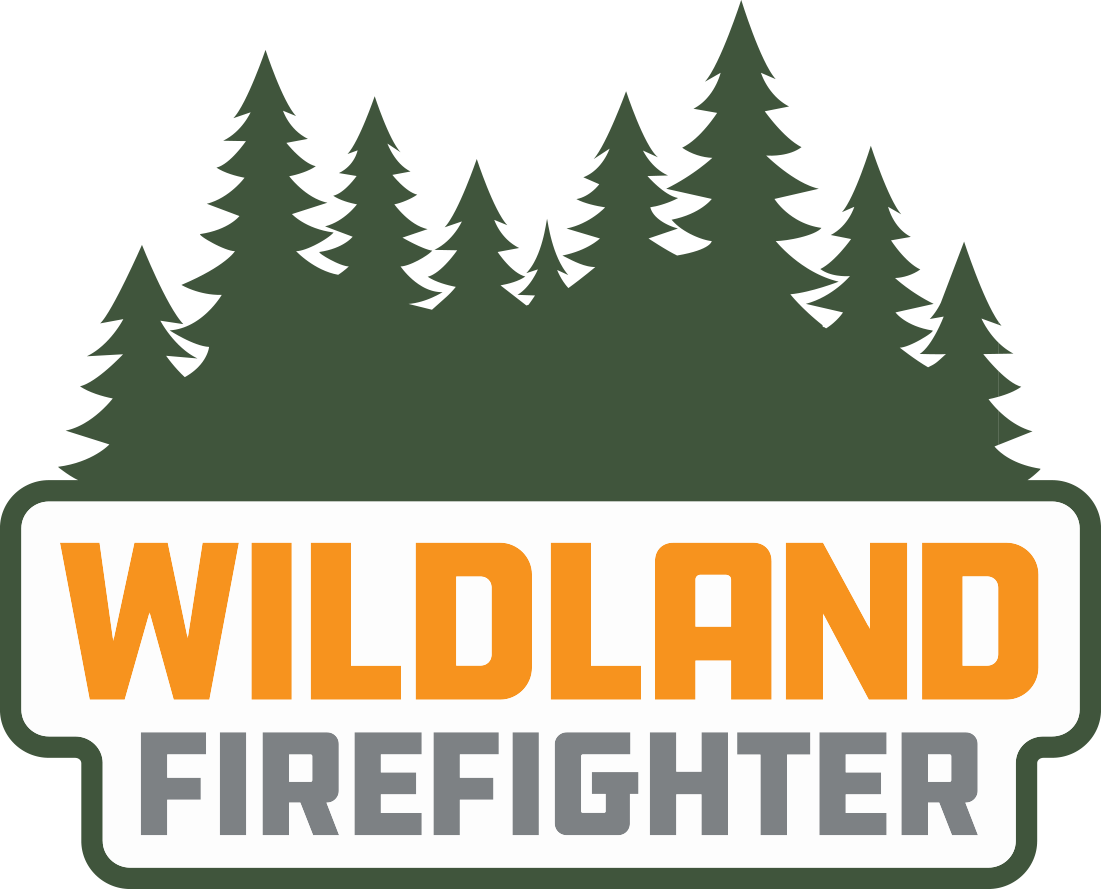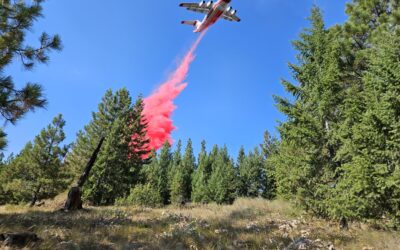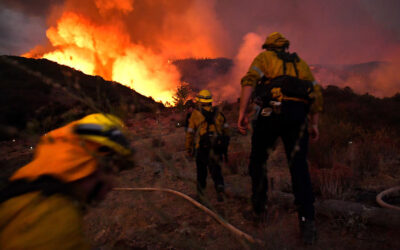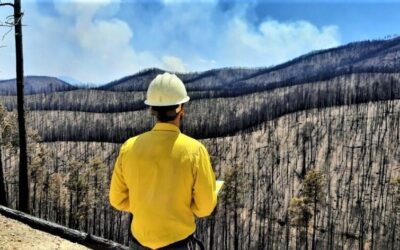By Wes Bolsen, Business Director of Wildfire Prevention & Protection at Perimeter Solutions
In a new report on wildfire activity, the United Nations says that the number of wildfires that take place around the world could double by the year 2100. Faced with this potential reality due to climate change and other contributing factors, the authors of the report advise countries to put more of their focus and investment on preventing fires from igniting, rather than waiting to suppress them after they start. (To view the complete report, click here.)
In the United States, governmental agencies and organizations in the private sector engaged in wildfire management are actively pursuing more proactive methods to help prevent wildfire ignitions to help protect lives and property. Ground-based application of phosphate-based long-term fire retardants is increasingly being included as part of these ongoing wildfire prevention and protection strategies.
Drivers for change
Aerial attack has proven to be very effective against preventing the spread of active wildfires since before PHOS-CHEK® long-term fire retardant started being used in 1963. Aerial attack does have certain limitations. When high winds accompany wildfires, pilot safety becomes a major concern. Aircraft may be grounded and unable to join the fight, while the winds carry embers from the active fire miles away, potentially leading to spot fires and more wildfire ignitions. Unfortunately, during these times and through the night, when long-term fire retardant can be the most effective, it can’t be applied by air.
It is also difficult for aircraft to support wildland firefighting efforts when there is smoke inversion. This usually takes place at night or during early morning hours when a wildfire is raging. Warm air from the fire rises, capping cold air, which traps smoke closer to the ground, resulting in dangerously low visibility for pilots and grounded aircraft.
Very Large Airtankers (VLATs) also have to stop providing support to on-the-ground firefighters at sunset. This is again due to visibility concerns flying through fire and smoke at night, as well as limited maneuverability among VLATs. Innovative fire agencies are working to get around this limitation. In 2021, the Orange County Fire Authority, in conjunction with LA County Fire, Ventura County Fire and Southern California Edison launched the Quick Reaction Force (QRF). The Air Task Force is set up to attack wildfires at night, using fixed-tank helicopters equipped with PHOS-CHEK 259-Fx, an ultra-high visibility fire retardant that is the only fire retardant approved for use in fixed-tank helicopters. The QRF had an active first year of operations, supporting 50 separate fire incidents1, and is expected to rapidly grow in use by the USDA Forest Service and CAL FIRE. Ground-based application of federally approved phosphate-based fire retardants is another effective option being considered.
The Case for Ground-Based LTR Application
Considering the challenges listed in the section above, the first advantage of incorporating ground-based application into active wildfire protection is that it can be applied by firefighters 24 hours a day. Every municipal fire department that deals with wildfires should carry long-term fire retardant in a concentrated form – it provides them with all the advantages of aerial firefighting without the need to wait for an airtanker to supply it. Having concentrate on hand, along with water tenders and standard spray equipment, firefighters have everything they need to start applying phosphate-based retardant on vegetation and other cellulosic surfaces within minutes of a fire ignition.
Being applied by firefighters on the ground, or in trucks equipped with approved spray nozzles, ground-based application of fire retardant can be much more precise than when dropped from aircraft. This is especially useful in creating ingress and egress routes to help safety personnel reach a fire and providing an escape route for individuals who need to evacuate.
What is more, innovations to a PHOS-CHEK brand long-term fire retardant have made it possible to use it in more than just reactive wildfire situations. Professors at Stanford University published research in 2019 in the Proceedings of the National Academy of Sciences (PNAS) that a breakthrough polymer had been created to mix with the most effective phosphate-based long-term retardants in the industry. This uncolored product had significantly enhanced adherence and durability properties compared to traditional LTR, which allows the retardant to be applied proactively at the start of fire-season and last potentially all the way through peak fire season with only a single application.
Known as PHOS-CHEK® FORTIFY®, the retardant was added to the USDA Forest Service Qualified Products List last October, authorizing its use on all federal and most state lands. Utilities and transportation companies have already demonstrated successful proactive applications with long-term fire retardant along roadsides and around utility poles.
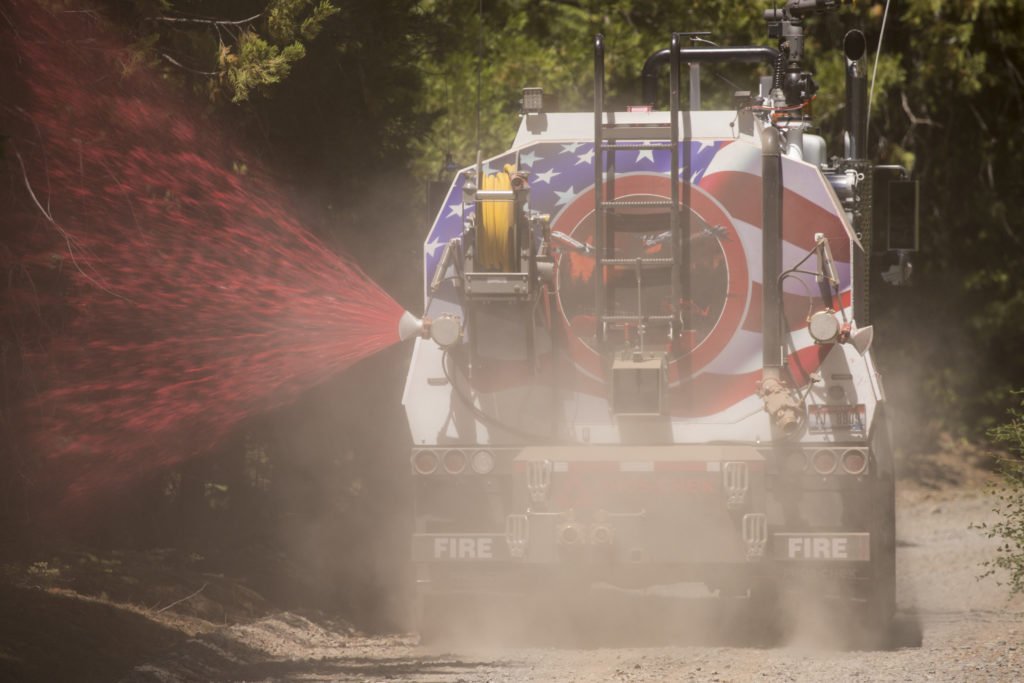
Ground-based fire retardant can be applied any time of day. They can be used for proactive wildfire prevention and to protect surfaces from active fires.
Not waiting for the USFS listing, utilities were already actively applying long-term retardant on private lands and putting PHOS-CHEK FORTIFY directly on their utility poles and around their assets in the face of approaching wildfires. Safety and Infrastructure Protection Teams (SIPTs) have proven to be highly effective in saving poles as well as millions of dollars that would otherwise have been spent in replacing the destroyed infrastructure. One utility privately reported that they applied long-term retardant to approximately 16,000 poles ahead of approaching wildfire and 3,000 of them were directly impacted by wildfire. Of those poles impacted by fire, approximately 94% did not have to be replaced. This resulted in close to $63 Million in savings that year alone.
In another example of its efficacy, PHOS-CHEK FORTIFY was applied along a four-mile stretch on Route 118 in Southern California prior to the 2019 wildfire season. There were 37 wildfires recorded in that area in a previous year, but following the application, not a single fire was recorded. The retardant was also applied along the roadway and under utility lines in Wildcat Canyon located in San Diego County, California, where a wildfire ignition did occur. According to SDG&E, what was projected to be a half-acre to one-acre fire was reduced in size 99% due to the proactive application of PHOS-CHEK FORTIFY. With over 84% of wildfire ignitions in the State of California occurring adjacent to a roadside and high-risk areas2, this technology has now proven itself as the leading solution to prevent wildfire ignitions. Without scraping the roadsides to bare mineral soil, which has horrific environmental consequences with erosion and mudslides, or trying to mow all of the roadsides, causing more fires than it is preventing, a solution is now available.
At the top of this article, the recent UN report on the expected proliferation of wildfires was cited. The UN is not alone with its forecast. Many experts in fire safety and climate change predict that the number of wildfires and their intensity will continue to increase in the coming years due to climate change, developers continuing to build in the wildland-urban interface, and other factors. It will be difficult to revert the impact of these influences, and aerial attack to prevent the spread of active wildfires with PHOS-CHEK will continue to be essential. But to deal with this challenge, those in fire management are already starting to work with technologies that will help prevent wildfire ignitions before they start. The proactive application of breakthrough high-durability PHOS-CHEK long-term fire retardants has already proven its effectiveness in preventing wildfires, and in the years ahead, its use will become more universal.
1Song, David and Lazarte, Roberto. “Heavyweight Firefighting Aircraft Knocks Out Emerging Wildfires”, Edison International, 18 Feb 2022, https://energized.edison.com/stories/heavyweight-firefighting-aircraft-knocks-out-emerging-wildfires Accessed 30 March 2022
2Yu, Anthony C., et al. “Wildfire Prevention Through Prophylactic Treatment of High-Risk Landscapes Using Viscoelastic Retardant Fluids”, Proceedings of the National Academy of Sciences of the United States of America, National Academy of Sciences, vol, 116 no. 42, 15 Oct 2019, https://www.pnas.org/content/116/42/20820 Accessed 13 May 2022
